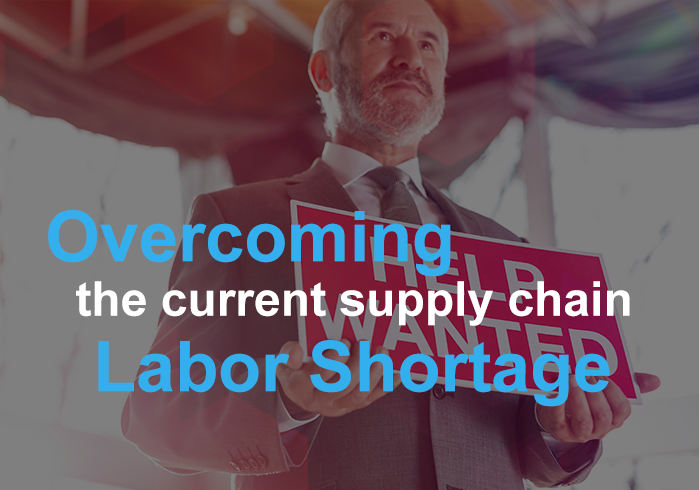
There has been a void in logistics labor supply since 2020 and now it is time to think about filling it. The embers of the COVID-19 pandemic are finally being managed by businesses. Logistics offers employment for those workers that have been displaced in other industries. Logistics managers should start thinking about scouting for talent that would have been previously unavailable due to a tight labor market.
In mid-March 2020, we were seeing historically low unemployment rates which meant that few workers wanted to operate in logistics. This trend was experienced among both semi-skilled and skilled workers. Once COVID-19 hit, the unemployment figures quickly rose as many companies were forced into furloughing workers or laying them off altogether.
Warehouses and DCs have been kept busy ferrying essential and less essential goods across the globe, but other sectors have not fared as well. A Wall Street Journal article in April indicated that storage and warehouse operators had hired 8200 people in the previous month. This was an aberration when compared to the overall fall in hiring across sectors.
May 2020 showed that the logistics industry was also facing significant pressure and that people were going to be laid off in the short run. Some players were leveraging access to entry-level workers and those with more experience. When unemployment was as low as 3.5% in the US in the previous year, such a business strategy would have been impossible.
For example, Amazon announced that it was hiring up to 175,000 new workers during March. These workers would be deployed in its order fulfillment and package delivery departments. By the end of the following month, all the positions were taken.
Tisha Danehl of The Adecco Group in Chicago argues that companies are upskilling and finding new talent in a more friendly labor market. Those in the logistics and supply chain sectors are prioritizing their critical labor needs, especially in those positions that were notoriously hard to fill in the pre-COVID-19 era. Industries associated with the supply of medical essentials and protective equipment are particularly anxious to be fully staffed.
Assisting Displaced Workers
The logistics sector can therefore become an opportunity for workers that had been displaced from their original industries due to the COVID-19 pandemic. Abe Eshkenazi of the Association for Supply Chain Management (ASCM) anticipates more spikes in demand and supply. This means that projecting labor needs will become increasingly difficult. For example, social distancing rules may mean that even when workers return they will be coming to a vastly different workplace than they left.
ASCM has opted to intervene by collaborating with other major actors such as the National Restaurant Association and the National Retail Federation. This joint effort is tasked with finding ways of opening opportunities for laid-off workers who can be redeployed to the logistics industry. Whereas there is an expectation that those who transfer will need some re-skilling or even up-skilling, the logistics industry is incredibly open due to its low barriers to entry.
Automation and the Future
The industry must contend with a trend towards automation of essential operations. This trend was taking place long before the COVID-19 pandemic arrived. Companies were looking for efficiency given the difficulty of recruiting suitably qualified staff. Others were hoping to augment their human resources with co-bots. The result was an uptick in the use of automated storage and retrieval systems (AS/RS).
Rick Blasgen of the Council of Supply Chain Management Professionals (CSCMP) reminisces about the obsession with robotics. These conversations are likely to continue in the post-COVID era despite the improved accessibility of labor resources. The underlying assumption is that staffing patterns and the market will eventually return to their pre-COVID patterns in which there was a chronic shortage of labor in the logistics industry.
Automation offers a long-term solution to the problems of recruiting workers. In any case, companies are much smarter now about how they deploy workers. The old solutions of merely throwing people at staffing problems are no longer acceptable. For example, issues with finding truck drivers are likely to re-emerge because older staff are retiring, and younger people are less likely to want to join the trade.
One of the interventions undertaken by CSCMP is to produce webinars that are particularly relevant to the industry responses to the COVID-19 pandemic. Both manufacturers and retailers are accessing these webinars. The key message is to prepare for a changing labor market after the pandemic. The economy is uncertain and therefore businesses cannot accurately predict how they are going to hire in the short term.
Blasgen predicts a battle for labor. For example, those that are laid off by restaurants and other hospitality establishments might move to other companies such as Amazon. That means that employment will improve and there will be fewer workers for the logistics industry to compete for.
Moving Forward
Companies must take proactive measures to engage with the labor market as it is and as it is expected to be. One of the predicted trends is that of more localized commerce and less emphasis on large-scale global chains. Indeed, some companies are already hiring based on this trend. Those that are shaping their hiring strategies for the second half of the year should already be recruiting.
Even people that are currently employed may be looking for better opportunities, which strategic companies might provide through carefully considered hiring. Corporate culture will be a key consideration for workers who are dealing with the after-effects of the lockdown and have had an opportunity to reassess the value that they are getting from their employers. One area that might need investment and reform is the talent acquisition process, especially with an emphasis on the comparative advantages of the prospective employer when juxtaposed with the current post.
It is dangerous to assume that all those who are laid off are suboptimal workers. Many companies use a last-in-first-out process which might mean that they are losing excellent talent. Tom Derry of the Institute for Supply Management (ISM) calls for a positive attitude to the labor market. For example, technology continues to play an invaluable role as an alternative labor resource. Such developments will require highly specialized workers to run supply chains.
The US manufacturing sector will be a bellwether in this instance. If it contracts, then there is an expectation that there will be a significant reduction in the demand for labor. Currently, manufacturing makes up no more than 12% of the US economy. Any further reduction in the size of the sector also means a reduction in demand for logistics and its labor resources.
Wrapping Up
The COVID-19 pandemic has led to the loss of many jobs in a range of sectors. However, logistics and transportation offer opportunities for those workers. This is a sector with exceptionally low requirements for entry-level jobs. Besides, companies in this sector are looking to recruit in a buyer’s market as opposed to previous times when they were competing with other sectors. The move to automation may also provide opportunities for skilled workers.
As the US economy recovers, there is no indication that the pre-COVID-19 workplace is going to be replicated. Instead, a new corporate culture and talent acquisition process must be implemented to attract the right workers at the right time. Players in the logistics industry should already be planning for their labor needs soon.




